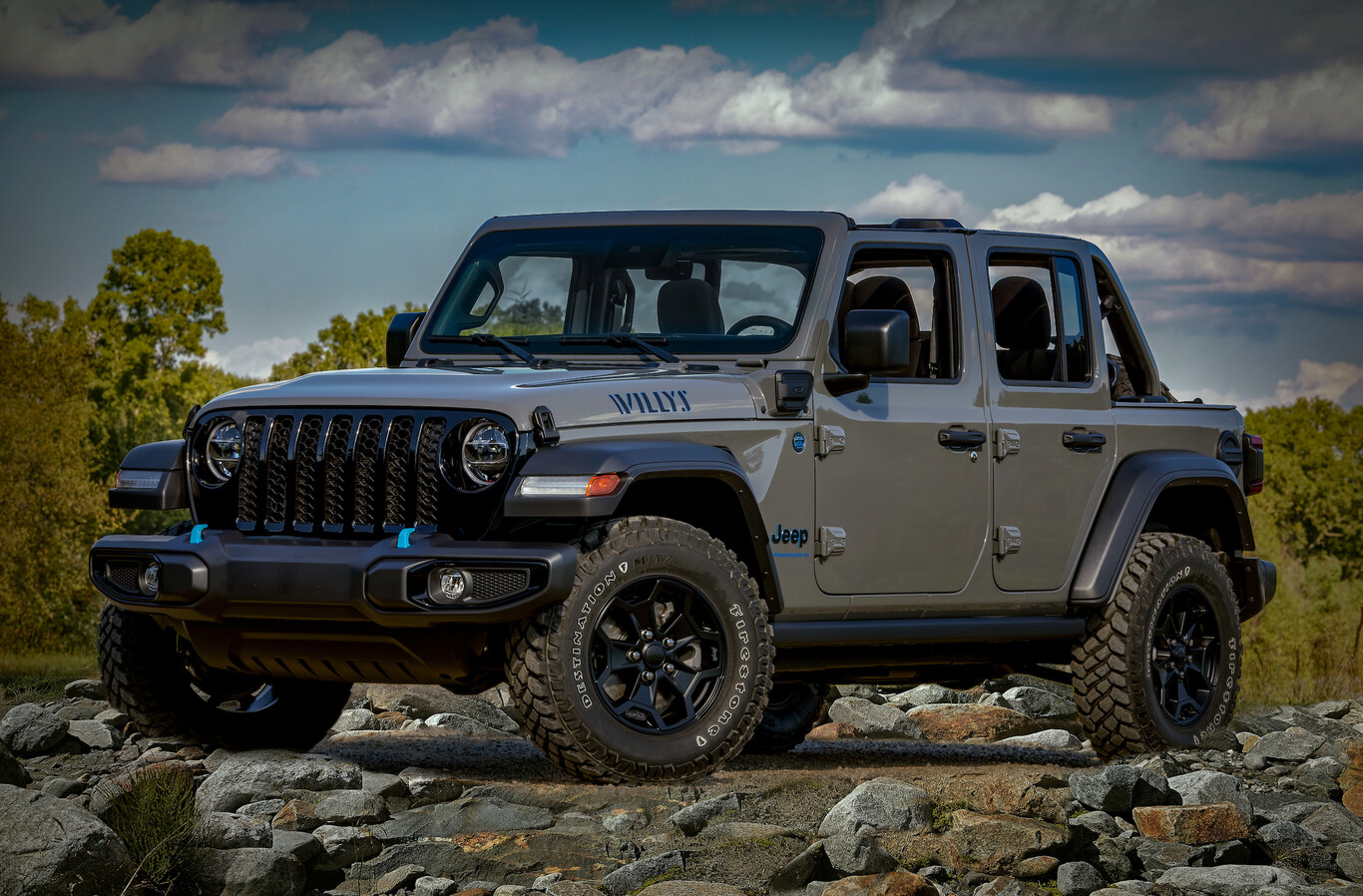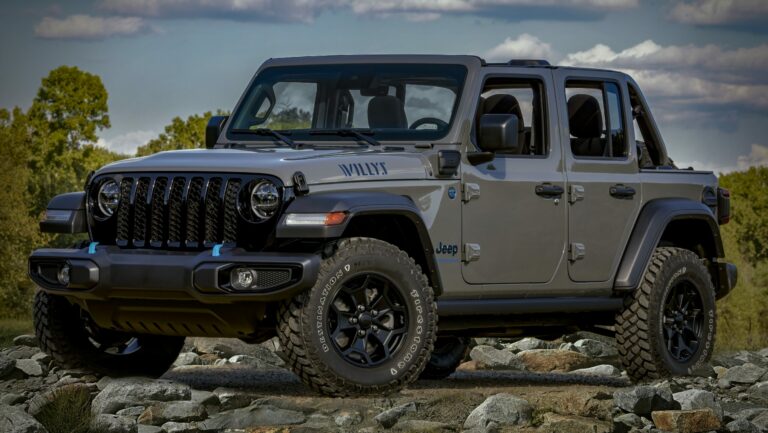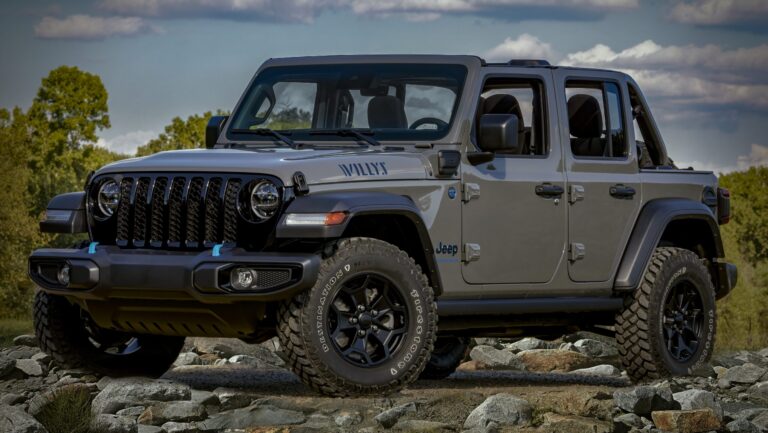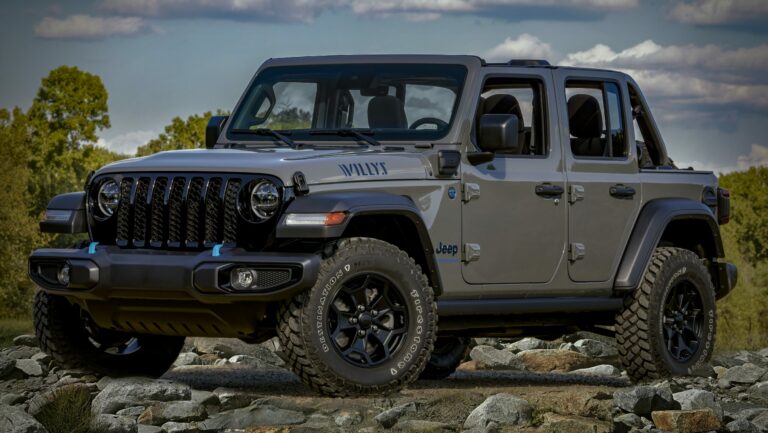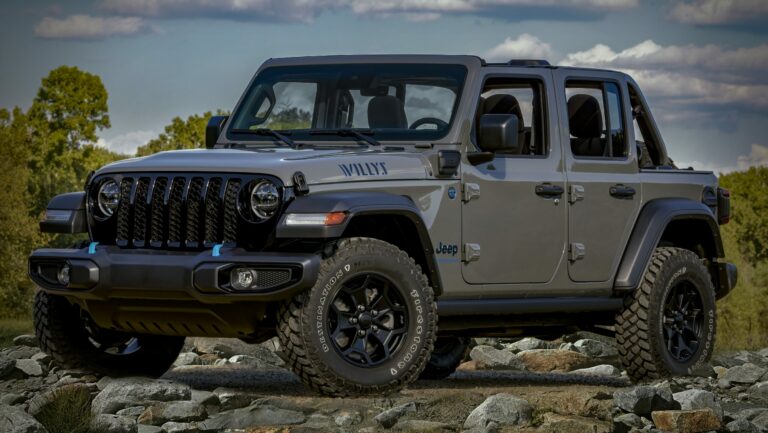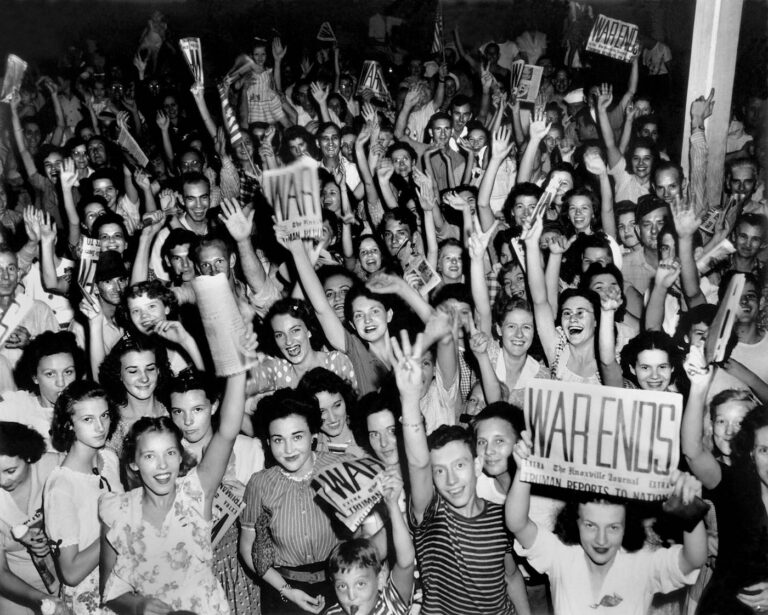Jeep M725 For Sale: Your Ultimate Guide to Acquiring a Vintage Military Workhorse
Jeep M725 For Sale: Your Ultimate Guide to Acquiring a Vintage Military Workhorse jeeps.truckstrend.com
Introduction: Unearthing a Piece of American History
The allure of military vehicles transcends mere transportation; it’s about owning a tangible piece of history, a machine engineered for purpose and resilience. Among the many iconic vehicles produced for the U.S. military, the Jeep M725 stands out as a unique and increasingly sought-after specimen. More than just a rugged 4×4, the M725 is a dedicated military ambulance, built on the robust Kaiser Jeep M715 "Five-Quarter" platform. Its distinctive high-top, boxy rear body immediately identifies it, hinting at its original mission of transporting wounded soldiers from the front lines.
Jeep M725 For Sale: Your Ultimate Guide to Acquiring a Vintage Military Workhorse
For enthusiasts, collectors, and those seeking an exceptionally durable and uniquely styled off-road vehicle or a canvas for custom projects, finding a Jeep M725 for sale represents an exciting prospect. These vehicles, produced in relatively limited numbers from 1967 to 1969, embody a bygone era of American military engineering. Today, they are prized for their utilitarian design, robust mechanicals, and the undeniable cool factor of owning a genuine piece of Cold War-era hardware. This comprehensive guide will delve into everything you need to know about finding, evaluating, purchasing, and even maintaining a Jeep M725, transforming your interest into a successful acquisition.
The Legacy of the M725: A Brief History
The Jeep M725 is a variant of the M715, a 1¼-ton tactical truck designed by Kaiser Jeep for military use, replacing the aging Dodge M37. The M715, often referred to as the "Five-Quarter" due to its payload rating, was produced from 1967 to 1969. While the M715 served as a general cargo and troop carrier, the M725 was specifically configured as an ambulance. It featured an enclosed, insulated rear compartment with a distinctive raised roof and side-opening doors, designed to accommodate four litter patients or eight ambulatory patients.
Powering the M725 was the durable Kaiser Jeep Tornado 230 cubic inch (3.8 L) OHC (Overhead Cam) inline-six engine, a revolutionary design for its time. Paired with a robust T-98 four-speed manual transmission and a two-speed transfer case, the M725 was built for severe off-road conditions and reliable operation in challenging environments. Its heavy-duty axles, leaf spring suspension, and robust frame made it incredibly tough, capable of navigating treacherous terrain to perform its life-saving duties. Though its production run was short, the M725 left a lasting impression as a testament to purpose-built military vehicle design, and its rugged simplicity continues to appeal to enthusiasts today.
Why Own an M725? More Than Just a Vehicle
The decision to acquire a Jeep M725 goes beyond simply needing a mode of transport. It’s an investment in a unique experience and a versatile platform.
- Collector’s Item & Investment Potential: As original military vehicles, M725s are becoming increasingly rare. Well-preserved or professionally restored examples can appreciate in value, making them a potentially sound investment for collectors.
- Unparalleled Off-Road Capability: Built for the battlefield, the M725’s heavy-duty drivetrain, substantial ground clearance, and robust construction make it an exceptional off-road machine. It’s capable of tackling trails that would challenge many modern 4x4s.
- Unique Utility & Customization Canvas: The spacious, enclosed rear compartment, originally for medical use, offers incredible potential for customization. Many owners convert M725s into overlanding rigs, unique campers, mobile workshops, or even distinctive promotional vehicles. Its distinctive look ensures it stands out in any crowd.
- Nostalgia & Historical Connection: For veterans, history buffs, or anyone with an appreciation for military heritage, owning an M725 provides a tangible connection to a significant period in American history. It evokes a sense of rugged individualism and the spirit of service.
- Durability & Simplicity: These vehicles were designed to be maintained in the field, often with basic tools. Their mechanical simplicity, lack of complex electronics, and heavy-duty components mean they are inherently durable and relatively straightforward to repair for those with mechanical aptitude.

![]()
Key Features and Specifications to Look For
When evaluating a Jeep M725 for sale, understanding its core specifications is crucial:
- Engine: The primary engine is the Kaiser Jeep Tornado OHC 230 I6. This engine is unique with its overhead cam design and can be a point of pride or potential challenge regarding parts. Ensure it runs smoothly, without excessive smoke or knocking. Some M725s may have undergone engine swaps to more common V8s (e.g., Chevy 350) for easier parts availability and more power; assess if this is a desirable modification for your needs.
- Transmission: Typically, a T-98 4-speed manual transmission is mated to a Rockwell T-200 transfer case. Check for smooth shifting and engagement of all gears, including 4-high and 4-low.
- Axles: The M725 uses heavy-duty Dana 60 front and Dana 70 rear axles, known for their strength. Inspect for leaks, bent housings, or excessive play in the differentials.
- Body & Chassis: The M725 shares its chassis with the M715. Pay close attention to the frame for any signs of cracking, bending, or extensive rust. The ambulance body itself is steel; inspect the floor, roof, and side panels for rust, especially around seams and window frames. Original features like the patient loading ramp, interior lighting, and medical cabinets (if still present) add to its historical value.
- Electrical System: Original M725s ran on a 24-volt electrical system. Many civilian conversions switch to 12-volt for easier compatibility with modern accessories. Understand which system is in place and verify its functionality.
- Tires & Wheels: Original military split-rim wheels are common. Ensure tires are in good condition and that the wheels are safe and properly mounted. Upgraded wheels and tires are a common modification for improved road manners or off-road performance.

Navigating the Market: Where to Find a Jeep M725 For Sale
Finding an M725 isn’t as simple as browsing a local car lot. These are specialty vehicles, requiring a more targeted search:
- Online Marketplaces:
- eBay Motors: Often has a revolving selection of M725s, from barn finds to restored examples.
- Craigslist/Facebook Marketplace: Good for local finds, but requires careful vetting of sellers. Use specific search terms like "Jeep M725," "M715 ambulance," or "military ambulance."
- Dedicated Military Vehicle Forums & Websites: Sites like G503.com (a popular military vehicle forum), SteelSoldiers.com, or specific military surplus vehicle dealer websites are excellent resources. These communities often have "for sale" sections and knowledgeable members.
- Government Surplus Auctions:
- GovPlanet.com: This is a prime source for former military vehicles. While direct M725s might be less common now, they do appear, often in "as-is" condition directly from military bases.
- Local Auctions: Keep an eye on local government surplus auctions or estate sales, though this is more of a long shot.
- Specialty Dealers & Restorers: Several businesses specialize in military vehicle sales and restoration. They often have higher prices but offer vetted vehicles, sometimes with restoration work already completed or options for customization.
- Word of Mouth & Clubs: Joining military vehicle clubs (e.g., Military Vehicle Preservation Association – MVPA) can connect you with a network of enthusiasts who might know of M725s for sale before they hit public markets.
Essential Considerations Before You Buy
Purchasing an M725 requires careful planning and realistic expectations:
- Condition is King: Rust is the primary enemy of these vintage steel vehicles. Inspect the frame, cab floors, bed, and especially the ambulance box for rust. Engine and drivetrain condition are paramount – a non-running M725 can quickly become a money pit. Electrical issues can also be complex due to the 24V system.
- Documentation: Ensure the seller has a clear title or proper bill of sale. For military vehicles, sometimes only a bill of sale is available, which can complicate titling and registration in some states. Verify your state’s requirements beforehand.
- Parts Availability: While the M715/M725 platform shares some common components with civilian Jeeps of the era, many parts are unique to military spec. The Tornado OHC engine parts, in particular, can be challenging to source. Be prepared to search specialty suppliers, NOS (New Old Stock) parts dealers, or consider aftermarket solutions.
- Maintenance & Repair: These vehicles are mechanically simple but require regular maintenance. Be prepared to get your hands dirty or budget for a mechanic familiar with vintage military vehicles. Finding such a mechanic can be a challenge outside of major metropolitan areas or enthusiast communities.
- Transportation: Unless the M725 is a verified runner, you’ll need to arrange for professional vehicle transport, which can add significantly to the overall cost, especially for a large, heavy vehicle.
- Legality & Roadworthiness: Verify if the M725 is street legal in your state. While many are, some states have specific requirements for military vehicle registration. Ensure all lights, brakes, and safety features are functional for road use.
Valuation and Pricing: What to Expect
The price of a Jeep M725 for sale can vary dramatically based on its condition, originality, location, and whether it’s a private sale or from a specialized dealer. Here’s a general breakdown:
| Condition Category | Description | Estimated Price Range (USD) |
|---|---|---|
| Barn Find / Project | Non-running, significant rust, incomplete, needs total restoration. Often sold "as-is, where-is." | $3,000 – $8,000 |
| Running Project | Starts and runs, but needs extensive mechanical work, bodywork, and interior restoration. May be drivable short distances. | $8,000 – $18,000 |
| Good Driver | Functional, roadworthy (or close to it), minimal rust, all systems generally working. May have some cosmetic flaws or minor mechanical needs. | $18,000 – $30,000 |
| Restored Original | Professionally restored to near-original military specifications. Excellent mechanical and cosmetic condition. Highly sought after by collectors. | $30,000 – $60,000+ |
| Custom Build / Overland | Significantly modified for civilian use (e.g., engine swap, modern interior, custom camper conversion). Price depends heavily on quality and extent of modifications. | $25,000 – $70,000+ |
Factors Influencing Price:
- Originality: Highly original, unrestored examples with verifiable military history can command premium prices.
- Mechanical Condition: A strong, running engine and solid drivetrain are major value drivers.
- Rust: The less rust, the higher the value. Extensive rust remediation is very costly.
- Documentation: Clear title and service records (if available) add value.
- Location: Shipping costs for large vehicles can be substantial, influencing regional pricing.
- Included Spares: A cache of spare parts can significantly increase a vehicle’s appeal and value.
Tips for a Successful Purchase
- Do Your Research: Thoroughly understand the M725’s quirks and common issues before you even start looking.
- Inspect Thoroughly (or Hire an Expert): If possible, inspect the vehicle in person. Bring a knowledgeable friend or hire a pre-purchase inspector experienced with vintage military vehicles. Look for rust, fluid leaks, electrical issues, and listen to the engine.
- Ask Detailed Questions: Inquire about the vehicle’s history, last maintenance, known issues, and why it’s being sold. Ask for photos of specific areas, especially common rust spots.
- Negotiate Wisely: Don’t be afraid to negotiate, especially on "project" vehicles. Factor in potential repair costs, transportation, and parts availability when making an offer.
- Factor in Hidden Costs: Beyond the purchase price, budget for transport, immediate repairs, parts, insurance, registration, and potential upgrades. These can easily add thousands of dollars to your total investment.
Owning and Maintaining Your M725
Acquiring an M725 is just the beginning. Owning one is a commitment to a unique automotive experience:
- Routine Maintenance: Like any vintage vehicle, regular fluid changes, lubrication, and inspections are crucial. The M725’s robust design means it can take a beating, but neglect will still lead to problems.
- Common Issues: Be prepared for potential fuel system issues (clogged lines, old pumps), electrical gremlins (especially with 24V systems), and rust progression. The Tornado engine, while unique, can have specific maintenance needs.
- Community Support: The military vehicle community is incredibly supportive. Forums, clubs, and online groups are invaluable resources for advice, troubleshooting, and finding parts.
- Sensible Modifications: While some owners prefer strict originality, many modify their M725s for improved usability. Common upgrades include 12V conversions, power steering, disc brakes, and engine swaps for more modern powerplants. Plan modifications carefully to enhance functionality without destroying its historical essence.
Conclusion: Driving a Legend
The Jeep M725 is more than just a truck; it’s a testament to rugged utility and a significant piece of military history. For those willing to embrace its unique characteristics and the commitment of vintage vehicle ownership, finding an M725 for sale and bringing it back to life can be an incredibly rewarding endeavor. Whether destined for off-road adventures, historical displays, or as a one-of-a-kind overland camper, the M725 offers an unparalleled blend of capability, character, and undeniable presence. Owning one means not just driving a vehicle, but preserving a legend and becoming a part of its continuing story.
Frequently Asked Questions (FAQ) about Jeep M725 For Sale
Q1: Is the Jeep M725 street legal in the United States?
A1: Generally, yes, M725s can be made street legal. However, requirements vary by state. You’ll need a clear title (or proper documentation for registration), working lights, brakes, and other safety equipment. Some states may require specific inspections for military vehicles.
Q2: What engine does the M725 typically have?
A2: The original engine in the Jeep M725 is the Kaiser Jeep Tornado 230 cubic inch (3.8 L) OHC (Overhead Cam) inline-six gasoline engine. Some vehicles may have undergone engine swaps to more common civilian engines like the Chevy 350 V8.
Q3: Are parts for the M725 hard to find?
A3: Parts for the M725 can be challenging to find, especially specific military-only components or original Tornado engine parts. However, many common components (like universal joints, brake lines, some electrical parts) can be sourced. Dedicated military vehicle parts suppliers, NOS (New Old Stock) dealers, and online forums (like G503.com or SteelSoldiers.com) are excellent resources for finding rarer parts.
Q4: Can I convert an M725 into an RV or camper?
A4: Absolutely! The M725’s spacious, enclosed ambulance body makes it an ideal platform for an overland camper or RV conversion. Its robust chassis and 4×4 capability are perfectly suited for off-grid adventures. Many owners have successfully undertaken such projects, customizing the interior to their needs.
Q5: What kind of fuel economy can I expect from an M725?
A5: Do not expect good fuel economy. The M725, with its heavy-duty components and older engine technology, typically gets very low mileage, often in the range of 6-10 miles per gallon (MPG), depending on driving conditions, terrain, and engine tuning.
Q6: Is the M725 expensive to maintain?
A6: The cost of maintenance depends heavily on the vehicle’s initial condition and your mechanical aptitude. While parts can sometimes be hard to find or expensive, the mechanical simplicity of the M725 means that many repairs can be done by a mechanically inclined owner, saving on labor costs. However, major overhauls or professional restorations can be very costly.
Q7: What’s the difference between an M715 and an M725?
A7: The M715 is the base 1¼-ton tactical truck, typically configured as a cargo or troop carrier with an open cab and bed. The M725 is a variant of the M715 chassis, specifically designed as an ambulance, featuring a fully enclosed, insulated, and distinctively shaped rear body for patient transport.
